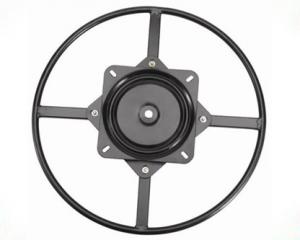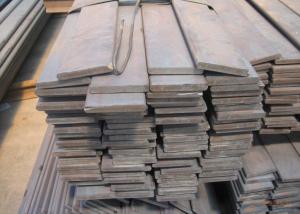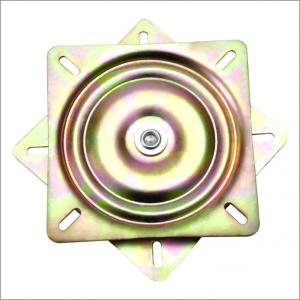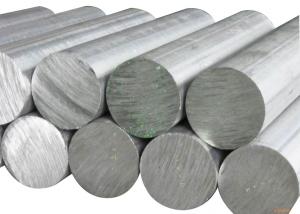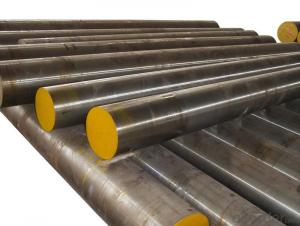Cr12/1.2080/BD3/SKD1/D3 High Carbon Steel Plate
- Loading Port:
- China main port
- Payment Terms:
- TT OR LC
- Min Order Qty:
- 25 m.t.
- Supply Capability:
- 10000 m.t./month
OKorder Service Pledge
OKorder Financial Service
You Might Also Like
Item specifice
Chemical Composition(%)
| C | Si | Mn | P | S | Cr |
| 2.00-2.30 | ≤0.40 | ≤0.40 | ≤0.030 | ≤0.030 | 11.50-13.00 |
Available Size
| Rolled flat steel | 12-90mm×205-610mm×L |
| Forged flat steel | 100-300mm×400-600mm×L |
Heat Treatment
| Item | Temperature ℃ | Hardness |
| Anneal | 750-760 | ≤255HB |
| Quenching | 950-980 | 59-63HRC |
| Tempering | 180-350 | 58-62HRC |
Characterstics
| 1.High hardening ability and abrasion resistance | ||||||||
| 2.Less quenching deformation | ||||||||
| 3.High toughness and more homogeneous carbide distribution |
Applications: Suitable for various complicated cold working dies with high precision and long lifetime,such as punching dies,cold extrusion dies,thread rolling dies,screw plates,cold extrusion dies,and precise measuring devices
Product show:
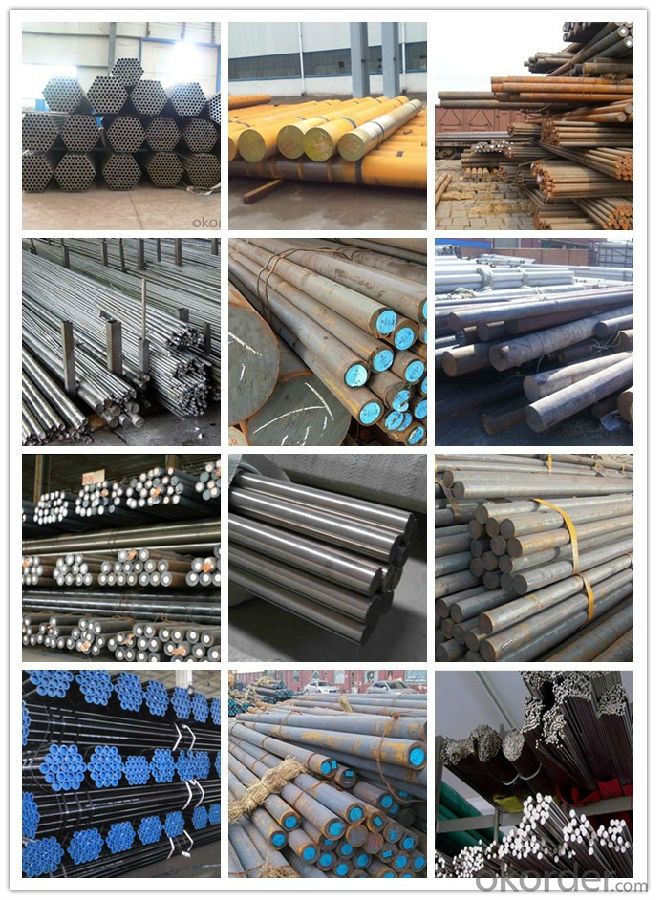
Workshop show:
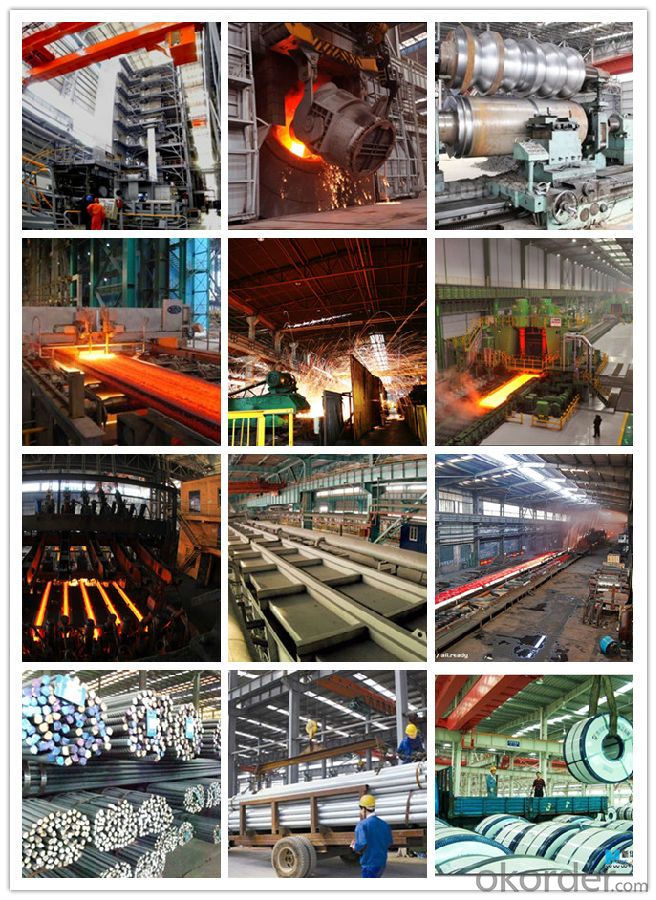
FAQ:
1, Your advantages?
professional products inquiry, products knowledge train (for agents), smooth goods delivery, excellent customer solution proposale
2, Test & Certificate?
SGS test is available, customer inspection before shipping is welcome, third party inspection is no problem
3, Payment Terms?
30% TT as deposit and 70% before delivery.
Irrevocable L/C at sight.
4, Trading Terms?
EXW, FOB, CIF, FFR, CNF
5, After-sale Service?
We provides the services and support you need for every step of our cooperation. We're the business partner you can trust.
For any problem, please kindly contact us at any your convenient time.
We'll reply you in our first priority within 24 hours.
- Q:How does special steel contribute to reducing product costs while maintaining quality?
- Special steel contributes to reducing product costs while maintaining quality through several ways. Firstly, special steel is known for its excellent strength and durability, which allows manufacturers to design products with thinner and lighter components. This reduction in material usage directly leads to cost savings without compromising on quality. Additionally, special steel possesses unique properties such as corrosion resistance, heat resistance, and wear resistance. By using special steel, manufacturers can create products that have a longer lifespan and require less maintenance or replacement. This not only reduces the overall cost of ownership for customers but also enhances the reputation of the brand for delivering reliable and high-quality products. Furthermore, special steel often allows for improved manufacturing processes, such as easier machinability or better weldability, which can result in increased efficiency and reduced production time. These time and cost savings can be passed on to the customers, making the final product more affordable without sacrificing quality. In summary, special steel's strength, durability, unique properties, and improved manufacturing processes contribute to cost reduction while maintaining or even enhancing product quality.
- Q:Can special steel be used for making cutting tools?
- Yes, special steel can be used for making cutting tools. Special steel, also known as tool steel, is specifically designed and manufactured to have excellent hardness, wear resistance, and toughness properties, making it highly suitable for cutting tool applications. The unique composition and heat treatment processes of special steel enable it to withstand high temperatures and maintain sharp cutting edges, ensuring efficient and durable performance for cutting tools.
- Q:What are the properties of wear-resistant stainless steel?
- Wear-resistant stainless steel has several properties that make it highly effective in resisting wear and tear. Firstly, it has a high hardness level, which allows it to withstand abrasive forces and maintain its shape under heavy loads. Additionally, it exhibits excellent corrosion resistance, preventing rust or degradation even in harsh environments. This type of stainless steel also possesses good impact resistance, meaning it can withstand sudden impacts without cracking or breaking. Furthermore, wear-resistant stainless steel typically has a low coefficient of friction, reducing frictional forces and minimizing wear when in contact with other materials. Overall, these properties make wear-resistant stainless steel a durable and reliable choice for applications where wear and tear are major concerns.
- Q:Carbon steel and stainless steel and pattern steel and special steel and high carbon steel difference
- Stainless steel with high chromium content and high grade steel is forged together with different steel
- Q:How does special steel contribute to the aerospace turbine industry?
- The aerospace turbine industry greatly relies on special steel due to its unique advantages that cannot be found in other materials. Special steel is renowned for its exceptional strength and durability, making it perfect for enduring the extreme conditions within aerospace turbines. The demanding temperatures, pressures, and rotational speeds experienced by turbine components necessitate a material that can withstand these harsh conditions without compromising performance or safety. Furthermore, special steel demonstrates excellent heat resistance and corrosion resistance properties, which are vital for the longevity of turbine components. Its ability to resist oxidation and corrosion enables special steel to maintain its structural integrity and functionality over extended periods, reducing the need for frequent maintenance or replacement. Moreover, special steel offers outstanding machinability and formability, enabling the production of intricate and complex turbine components. This facilitates the creation of highly efficient and precisely engineered turbine blades, vanes, and other crucial parts necessary for the optimal performance of aerospace turbines. Additionally, special steel provides the necessary characteristics for enhanced fuel efficiency in aerospace turbines. By utilizing high-strength special steel alloys, turbine manufacturers can design lighter and more aerodynamic components, resulting in reduced overall weight and drag. Consequently, this leads to increased fuel efficiency and lower emissions, contributing to a more sustainable and environmentally friendly aviation industry. In conclusion, special steel plays a vital role in the aerospace turbine industry by delivering the required strength, durability, heat resistance, corrosion resistance, and machinability essential for the efficient and dependable operation of turbine components. Its contribution extends to improved fuel efficiency, reduced maintenance needs, and enhanced overall performance, establishing it as an indispensable material for the aerospace turbine industry.
- Q:What are the different mechanical defects in special steel?
- There are several mechanical defects that can occur in special steel, which can compromise its overall strength and performance. Some of the most common defects include: 1. Inclusions: Inclusions are foreign particles or impurities that are present in the steel. These can include oxides, sulfides, or other non-metallic materials. Inclusions can weaken the steel and reduce its ductility, making it more prone to cracking or failure. 2. Segregation: Segregation refers to the uneven distribution of alloying elements within the steel. This can lead to variations in hardness, strength, and other mechanical properties across the material. Segregation can create localized areas of weakness, increasing the likelihood of failure under stress. 3. Cracks: Cracks can occur in special steel due to a variety of factors, such as improper cooling, excessive heat, or high levels of stress. Cracks can significantly reduce the structural integrity of the steel and may propagate over time, leading to catastrophic failure. 4. Laminations: Laminations are thin layers or sheets of material that are formed during the manufacturing process. They can occur due to improper rolling or forging, or the presence of inclusions. Laminations can weaken the steel and lead to premature failure under load. 5. Decarburization: Decarburization is the loss of carbon from the surface of the steel, typically due to exposure to high temperatures or oxidation. This can result in a layer of softer, lower carbon steel on the surface, reducing the overall hardness and strength of the material. 6. Grain growth: Grain growth occurs when the individual crystals within the steel (grains) grow larger over time. This can happen due to high temperatures, prolonged exposure to stress, or improper heat treatment. Grain growth can reduce the strength and toughness of the steel, making it more prone to deformation or fracture. It is important to note that these mechanical defects can vary in severity and are often influenced by factors such as the manufacturing process, quality control measures, and the specific composition of the special steel. Regular inspection, testing, and adherence to proper handling and processing techniques are essential to minimize these defects and ensure the desired mechanical properties in special steel.
- Q:What is the role of special steel in the oil and gas industry?
- Special steel plays a crucial role in the oil and gas industry as it is used for various applications where high strength, corrosion resistance, and temperature resistance are required. It is commonly used to manufacture pipes, valves, and fittings for oil and gas extraction, transportation, and processing. Special steel's properties enable it to withstand harsh environments, such as high pressure, extreme temperatures, and corrosive fluids, ensuring the integrity and safety of equipment and infrastructure in the oil and gas industry.
- Q:Can special steel be used for making defense industry components?
- Indeed, the utilization of special steel in the production of defense industry components is possible. Special steel pertains to a classification of steel that has been deliberately designed and engineered to possess superior attributes and qualities when compared to standard steel grades. These attributes comprise high strength, exceptional toughness, resistance to corrosion, heat resistance, and wear resistance. Within defense industries, the materials utilized for components like armor plates, military vehicles, weapons systems, aircraft structures, and naval vessels must be able to endure extreme conditions while delivering optimal performance. Special steel, with its extraordinary attributes, fulfills these requirements and is frequently employed in the manufacturing of defense industry components. For instance, armor plates employed in military vehicles and personal body armor are commonly constructed from special steel alloys that can withstand ballistic impacts and safeguard personnel. Similarly, aircraft structures and naval vessels necessitate steel that can endure high stresses, corrosion caused by saltwater, and extreme temperatures, all of which can be accomplished through the use of special steel. Furthermore, the ease with which special steel can be machined, welded, and fabricated also contributes to its application in the production of defense industry components. This facilitates efficient production and assembly of intricate defense equipment. Overall, special steel is an essential material within the defense industry as it presents exceptional strength, durability, and performance attributes, rendering it an ideal selection for the production of defense components that must withstand rigorous and demanding conditions.
- Q:What are the different production methods for special steel?
- There are several different production methods for special steel, each with its own unique advantages and characteristics. Some of the most common methods include: 1. Electric Arc Furnace (EAF): This method involves melting scrap steel in an electric arc furnace, where an electric current generates intense heat to melt the materials. EAF is popular for its flexibility, as it can produce a wide range of steel grades and alloys. 2. Basic Oxygen Furnace (BOF): In this process, molten iron from a blast furnace is combined with scrap steel and oxygen to remove impurities and adjust the carbon content. BOF is known for its high production capacity and ability to produce large quantities of steel. 3. Vacuum Induction Melting (VIM): VIM is a method used to produce high-quality and high-purity steel. It involves melting the raw materials in a vacuum environment to prevent contamination and achieve precise control over the alloy composition. 4. Continuous Casting: This method involves pouring molten steel into a water-cooled mold, which continuously produces solidified steel slabs, blooms, or billets. Continuous casting is known for its efficiency and ability to produce consistent and defect-free steel products. 5. Powder Metallurgy: This technique involves compacting and sintering metal powders to produce steel with specific properties. Powder metallurgy allows for the production of complex shapes, improved mechanical properties, and the incorporation of alloying elements that are challenging to achieve through traditional methods. 6. Additive Manufacturing (AM): Also known as 3D printing, AM is a relatively new method for producing special steel. It involves layer-by-layer deposition of metal powders, which are then fused together using heat or a laser. AM offers great design freedom, the ability to produce complex geometries, and the potential for customized steel parts. Each production method has its own advantages and limitations, and the choice depends on factors such as the desired steel properties, production volume, cost considerations, and the specific requirements of the end-use application.
- Q:Is special steel resistant to wear and abrasion?
- Indeed, special steel is renowned for its exceptional resistance against wear and abrasion. Through the utilization of distinct alloying elements and heat treatment procedures, special steel is frequently crafted to elevate its hardness and toughness. These remarkable attributes confer upon it a remarkable immunity to the damaging consequences of wear and abrasion, rendering it ideal for endeavors necessitating longevity and durability. In various industries, including automotive, aerospace, construction, and manufacturing, special steels are frequently employed due to the harsh environments they encounter or the repetitive mechanical actions they endure, both of which can induce wear and abrasion.
1. Manufacturer Overview |
|
|---|---|
| Location | |
| Year Established | |
| Annual Output Value | |
| Main Markets | |
| Company Certifications | |
2. Manufacturer Certificates |
|
|---|---|
| a) Certification Name | |
| Range | |
| Reference | |
| Validity Period | |
3. Manufacturer Capability |
|
|---|---|
| a)Trade Capacity | |
| Nearest Port | |
| Export Percentage | |
| No.of Employees in Trade Department | |
| Language Spoken: | |
| b)Factory Information | |
| Factory Size: | |
| No. of Production Lines | |
| Contract Manufacturing | |
| Product Price Range | |
Send your message to us
Cr12/1.2080/BD3/SKD1/D3 High Carbon Steel Plate
- Loading Port:
- China main port
- Payment Terms:
- TT OR LC
- Min Order Qty:
- 25 m.t.
- Supply Capability:
- 10000 m.t./month
OKorder Service Pledge
OKorder Financial Service
Similar products
New products
Hot products
Related keywords























